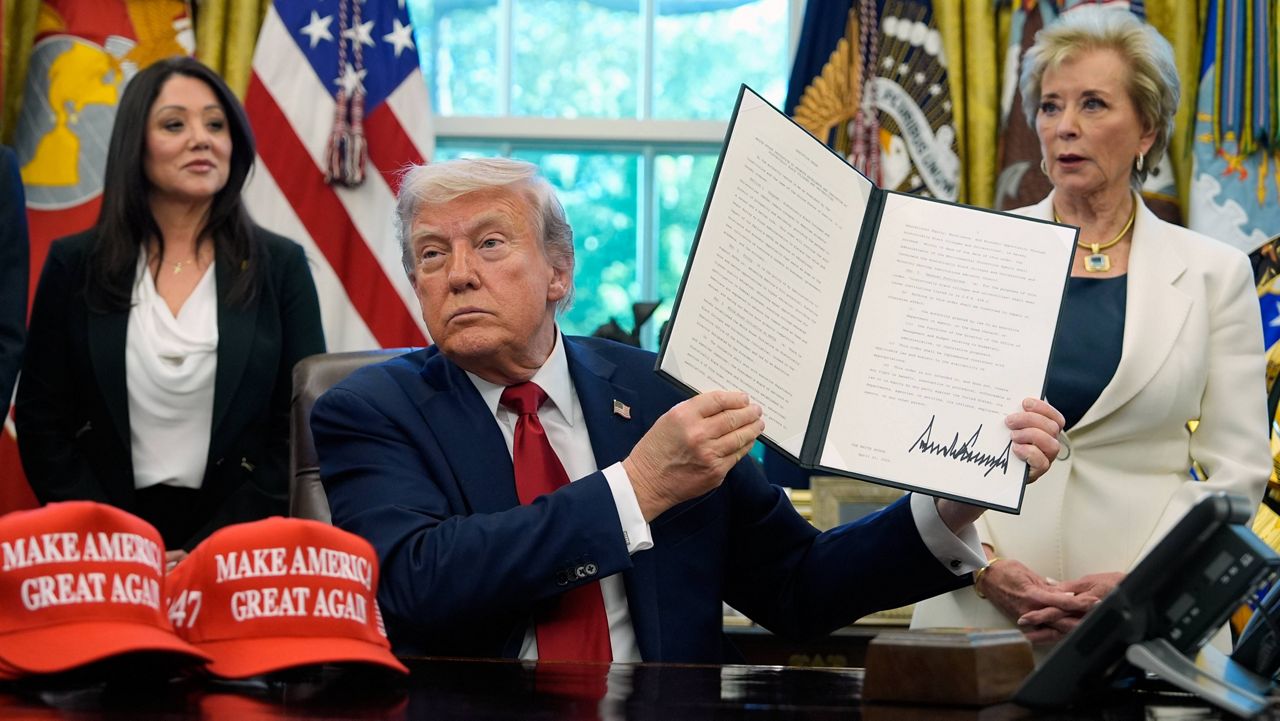The race for the White House is dominating the 2024 political landscape, but the battle for the U.S. Senate will likely determine how much the winner of the presidential election can accomplish in the next four years.
Many of the accomplishments President Joe Biden touts on the campaign trail – new laws funding infrastructure projects, the domestic production of computer chips, and efforts to fight climate change – were possible largely because Democrats have controlled the Senate.
But that control is in jeopardy this November.
Jessica Taylor, the Senate and governors editor for the non-partisan Cook Political Report, told Spectrum News this year’s lineup can be summed up in one sentence: “The Senate battleground is essentially that Democrats have no room for error.”
Including three Independents who vote with them, Democrats currently have a slender 51-to-49 majority in the Senate.
This year, 34 seats are up for grabs and Taylor said the five most at risk of flipping from one party to another in November are all seats held by Democrats.
One of them, West Virginia, is all but gone because Sen. Joe Manchin is retiring and he’s seen as the only Democrat who can win his now deeply Republican state.
That leaves Arizona, Montana, Nevada and Ohio – the four races Taylor has rated as toss-ups, or the most competitive.
“Democrats have to defend every incumbent that they have, but even doing that might not be enough,” she said.
That’s because even if Democrats prevail in the four toss-up races, that would leave a 50-50 Senate.
If former President Donald Trump wins in November, his vice president would cast the tie breaking vote in the Senate, giving Republicans control.
This month, Taylor changed her rating for Nevada’s Senate race from lean democratic to toss-up.
Incumbent Democratic Sen. Jacky Rosen will likely face Republican veteran Sam Brown. Taylor said Nevada’s slow economic recovery from COVID, its status as a presidential battleground, and its transient population producing new voters each cycle will make it more competitive for Democrats than races in other key states.
“So when I looked at that against some of the other swing states, like Michigan or Wisconsin or Pennsylvania, Nevada was actually in worse shape,” Taylor said.
She also considers Montana and Ohio to be toss-ups. Longtime incumbent Democrats Jon Tester and Sherrod Brown are each running for a fourth term in states Trump has won twice.
In Montana, Tester is likely to face former Navy SEAL Tim Sheehy. In Ohio, Brown is being challenged by businessman Bernie Moreno.
“They were both elected in 2006, when Democrats won back the Senate,” Taylor said. “They were reelected in 2012, when Obama was reelected in a very strong year. And then they won in 2018, another very strong Democratic year [amid] the backlash to Trump's first midterm election. So they're running in a very different environment though.”
The fourth toss-up is in Arizona, another presidential battleground. Democrat Ruben Gallego, a current U.S. House member, is expected to take on Republican Kari Lake, a former TV news anchor who unsuccessfully ran for governor in 2022. They are running to replace Independent Sen. Kyrsten Sinema, who is leaving office.
One potential wild card is the race for president. Taylor said in presidential election years, key Senate races often align with the race for the White House.
“In 2016, every single Senate race went the same way as the presidential race did in their state,” she said. “And in 2020, only Susan Collins in Maine managed to win reelection even as Biden carried that state. So it's a difficult task to convince voters to vote for one party for president and go a different way for Senate.”
This cycle, Taylor said national Republicans have been more involved in competitive primaries because they struggled with flawed candidates in 2022.
She said Democrats in competitive races, meanwhile, are distancing themselves from Biden to seem more independent.
The election is still more than six months away, so this Senate forecast could easily change, but for now, Democrats are on defense and Republicans are on offense.







_crop)

